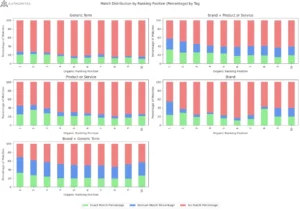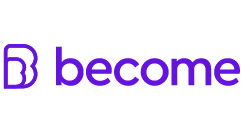Welcome to another edition of the Digital Roundup. This roundup will cover a number of different aspects of the digital world, including conversion rate optimisation, Google guidelines and other useful articles that we discovered over the past few weeks.
Building Landing Pages that Rank For SEO
John Doherty wrote a great post that gives insight on great landing pages. He firstly gives Dropbox as an example of a superb landing page, however it is very specific, hard to replicate and from an organic search perspective, very tough. WePay is the next example of a landing page, this one not being so good as they ask for too much information from the user without giving enough information to the search engines to help them rank organically.
John then goes on to talk about the difference between squeeze pages and ranking pages, where squeeze pages are directed towards conversions and ranking pages that can also convert, but at a lower rate than squeeze pages.
One example that he brings is HootSuite.
The one thing that squeeze pages tend to have in common are; a form, a big CTA, not much content and a few points about what the product/service is about.
This kind of page is great for very targeted traffic, maybe even ppc but if your business is not geared to first touch conversions then this type of page will not keep customers coming back.
To build landing pages that a great, build pages that build trust, rank, and convert.
Use Personas.
Who is going to be coming to your site, who are you targeting, who are your best users?
Image Credit: KeywordLevelDemographics by MikeKing
What are these users looking for? What are they doing? Some of them will convert, others browse and some are just looking for informative information. Who is the page targeted at? For the ones just browsing, your challenge is to build enough trust and interest with them to get them to convert.
Content and CTA’s.
Obviously without content you are not going to rank. This does not apply only to textual content though. It also applies to images, video, quotes, etc. John brings KissMetrics as an example.
The page is broken down into three parts. The top section appeals to all of the different Analytics person, with two CTA’s that stand out. The middle section seeks to build trust with the users with another CTA. Then the last section shows their clients and more strong CTA’s for all aspects of their products; a demo, free trial and more info. This page is geared towards conversion but it also has enough value with the text, images and CTA’s to rank for its terms.
Pages that are built for both customers and rankings, as well as conversions, usually have a longer page with more media types, features and benefits and the ability for the user to move deeper into the site easily, not just sign up.
Multi-Regional and Multilingual Sites
This post came out on the Google Webmaster Tools site where it details the difference between the multi-regional and multilingual sites. If you deal with sites in many languages then you should have a good read of this post.
How to Check Your Title Tags Won‘t Get Cut Off in Google SERPs
Mike Hall demos a great way to check if your title tags are the right length for Google SERP’s. I’ve made a quick video showing how you can easily check using Firefox and the fire bug extension.
[HowTo] Write a Call–to–Action that Converts – With Case Studies
Michael Aagaard writes that the copy you use in your call-to-action is just as important as the shape, size, and color of the button and that even minor changes can have significant impact on your conversion rate.
Understand CTAs
A CTA is what every user has to go through in order to convert. Whether that means, download a PDF or software, fill out a form, buy a product or a service or ever click through to another page. There is a very fine line between “bounce” and “conversion”.
Shape and colour are important visual cues but most important is the copy itself that determines whether the user will interact or “bounce”.
Michael then goes on go give some examples of how minor changes had a major impact which you can see on the original post.
This shows how just a small change can have a large impact on conversions. Finding the right copy is vital to your CTA success.
More case studies can be found on the original post.
3 Easy Steps to get your Boss to Give you a Real Content Marketing Budget
Will starts off by highlighting that many attendees of the Mozcon walked away with the mindset that they better start jumping onto producing quality content and marketing it. SEOs need to earn our seat at the marketing table. Building content is hard, there is no question about it, but this post focuses on making the pitch in the enterprise world easier.
Recognize Head Terms vs Competitors
Wil brings an example where he takes one of his head terms for Marketo which is lead marketing and shows that is it ranking quite well.
With 4 results on the first page this may be tough competition. Let’s see where this takes us.
Hubspot for example ranks around position 9 for the term. Taking the top 5 sites and show how much content that they are producing in a quick check for the target keyword.
Wil uses 3 basic measures to quantify the level of competition.
- Site content using the keyword in the title
- Blog content with the keyword in the title
- Blog content produced in the last 12 months with the keyword in the title
The results ended in data that looked like the following:
Some points that should stand out are:
- Eloqua, who is in position one for lead nurturing should be thinking that they should be producing more content since Hubspot have been dominating that space over the last 12 months.
- Marketo should think about increasing their blog content so they level with Hubspot or at least ensure that they do not fall too far behind.
- Hubspot are thinking that they will probably soon have the upper hand on Manticore who is currently ranking above us because they have slowed down their content marketing game in the last 12 months.
Many business to business site that invest in a large amount of content often use subdomains that you may not catch. To ensure that you do not miss anything check in reverseinternet.com and click on subdomains. You can even scan for pages that include your target keyword.
To pitch to executives for budget, keep quality of pieces out of the strategy at the start and focus on activity and content produced, otherwise you could go on and on, giving statistics of levels of quality with domain authority vs page authority vs page rank and ultimately start confusing people. Keep it simple, highlighting what is important.
Highlighting the opportunity ahead of us…
Once you have the head term, drop it into Ubersuggest to obtain results. You should also pull in some longer tail keywords you have found and use rank checker for both your domain and that of your competitors. Pull this data into Excel to visually show what they are seeing from rank checker into a pivot table. Something to the effect of:
This provides some obvious points.
- Marketo has more first page visibility across their longer tail keywords not just their head term
- 30% of Manticore’s selected keywords reveals that 30% to 70% are nowhere to be found.
Hopefully this illustration will get the execs to see past the head keyword obsession and start investing in the long tail.
Compare your request to other channels they spend much more budget on
If you haven’t convinced them now, this is the closer.
Take it to PPC data, pull a search query report for the root keyword and the derivatives it matches to.
Point out that Quality content can rank for 3-4 years which implies that a one-time investment can obtain visibility in for 4 years or more. Highlight that people search for fresh content so updating regularly is recommended.
Thanks to @wilreynolds and @dohertyjf for permission for the use of their images.
Other articles or tips that you may find interesting are:
- The Ultimate Guide to Content Planning
- The Search Power Of Brand
- Guest Blogging Tips – Step-by-Step Guide for Every Blogger
- 5 Jaw Dropping Tips for Guest Posting Success
- How To Get More Comments On Your Articles
- What the New Google Plus Knowledge Graph Update Means For Brands
- Google Webmaster Tools Breaks Down Site Errors
- Link Clump (Chrome extension)

















